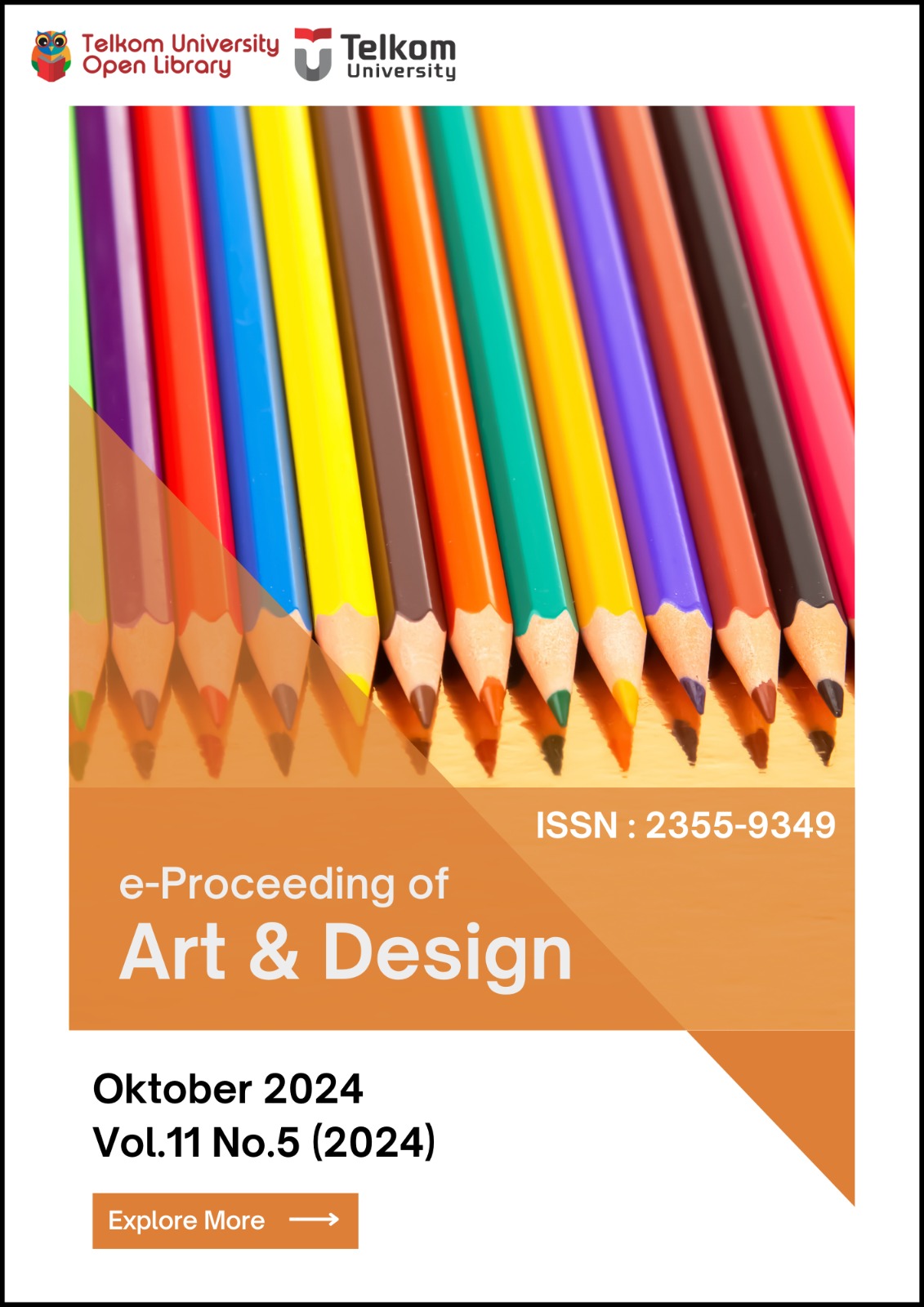Interior Design of the Cibiru Creative Center in Bandung City with a Sustainable Approach
Abstract
: Bandung is one of the cities that provides many new ideas in terms of entrepreneurial creativity in Indonesia. 56% of the economy of Bandung City comes from the creative industry. In Cibiru District itself there has been an improvement in the economy after the COVID-19 pandemic. There are 6,000 MSMEs consisting of culinary (38%), services (26%), fashion (25%), and arts and crafts (11%). However, there are still many MSMEs who run their businesses individually, conventionally, and need a place to sell. There is a competition in the form of design ideas for a Cibiru creative center, discussions regarding waste processing or management issues, regional head priority programs in the form of 1 youth creativity center per region and sub-district co-working space, and the absence of facilities to be able to facilitate all the needs of the Cibiru community, especially MSMEs in one area. location, is the main reason for the need to carry out Interior Design for the Cibiru Creative Center in Bandung City with a Sustainable Approach, in order to improve the quality of the environment from an ecological, economic and social perspective.
Keywords: creative center, cibiru, msmes, sustainable
References
Anjani, S. D., & Yuniati, A. P. (2024). Perancangan interior kantor cabang Manakib Realty di Jakarta dengan pendekatan identitas. EProceedings of Art & Design, 11(1), 1372–1390.
Ceschin, F., & Gaziulusoy, I. (2020). Design for sustainability: A multi-level framework from products to socio-technical systems. New York, NY: Routledge.
Fakhriyah, A., Liritantri, W., & Palupi, F. R. (2024). Perancangan ulang interior CoWorking CO&CO Hub Bandung dengan pendekatan perilaku. EProceedings of Art & Design, 11(1), 1734-1748.
Panero, J., & Zelnik, M. (1979). Human dimension: Interior & space. New York, NY: Watson-Guptill Publications.
Pramedesty, R. D., Murdowo, D., Sudarisman, I., & Handoyo, A. D. (2018). CoWorking space sebagai solusi kebutuhan ruang kerja berdasarkan karakteristik startup kreatif. Idealog: Ide dan Dialog Desain Indonesia, 3(1), 50. https://doi.org/10.25124/idealog.v3i1.1782
Satwiko, P. (2009). Fisika bangunan. Yogyakarta: ANDI.
Schuermann, M. (2014). Coworking space: A potent business model for plug 'n play and indie workers. Berlin, Germany: Rocket Publishing.
SNI 03-6197-2000. Nilai minimum lux.
SNI 03-6572-2001. Kenyamanan termal.
Taufiq, A. S., & Wulandari, R. (2016). Efektivitas lokasi penempatan papan petunjuk (signage system) pada lobby Stasiun Kereta Api Bandung. Jurnal Idealog, 1(1).
Woodcraft, S., Hackett, T., & Caistor-Arendar, L. (2011). Design for social sustainability: A framework for creating thriving new communities. London, UK: The Young Foundation.






